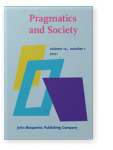Vol. 12:1 (2021) ► pp.132–145
Why does Lee say what he says the way he says it?
A socio-cognitive approach to understanding the Chinese character in East of Eden
This paper employs Kecskes’ socio-cognitive approach to analyze the varied speech styles and cognitive dynamics of the Chinese character (Lee) in John Steinbeck’s East of Eden. The discussion of the novelistic dialogue segments has shown that the Chinese interlocutor’s verbal strategies vary from pidgin to English or a combination of the two, which are predominantly hearer-centered and marked by deliberate and conscious attempts on the part of the speaker to meet the cooperation principle. Lee’s movement between different communication modes is partly predetermined by the disparate power relations between the interlocutors and partly determined by his own communicative needs, thus producing a unique pattern that governs his language use in the given intercultural communicative process. In particular, pidgin is used as a self-protection mechanism, a buffer and a way of identification by the Chinese character, which informs the wider socio-historical context of Chinese immigrants’ victimization of racial discrimination in the American society at the turn of the twentieth century. Just like his shifting verbal strategies in intercultural communication, Lee’s cultural identity is also characterized by fluidity in the in-between space of two cultures.
Article outline
- Introduction
- Why is the socio-cognitive approach relevant?
- Why does Lee say what he says the way he says it?
- Conclusion
- Acknowledgements
- Notes
-
References
